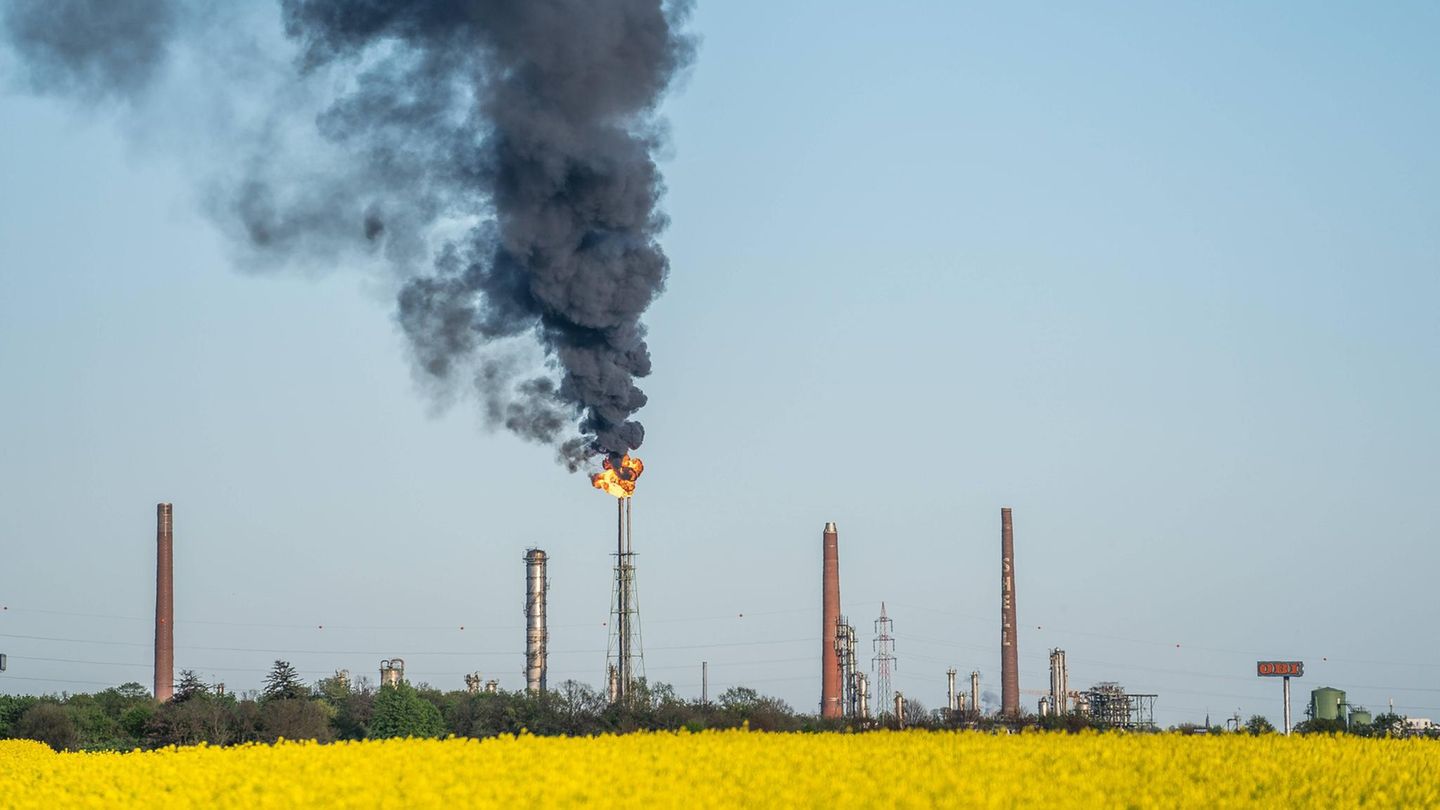Unbridled hunger for energy
The world has never burned as much oil, gas and coal as it will in 2024
Copy the current link
Many countries want to move away from fossil fuels such as oil, but are unable to do so. That is the conclusion of a new report. But there is also good news.
Instead of using less oil, gas and coal, humanity is burning more and more of it. This year, global fossil carbon dioxide emissions are expected to climb to a new record high, according to the international research initiative Global Carbon Project.
There is no clear sign that the world has already reached the peak of fossil emissions, said Judith Hauck from the Alfred Wegener Institute in Bremerhaven, one of the approximately 120 authors of the Global Carbon Budget 2024 report. According to the report Fossil CO2 emissions this year will be 0.8 percent higher than last year and will reach 37.4 billion tons.
Lead author Pierre Friedlingstein from the British University of Exeter added in the direction of the World Climate Conference in Baku in Azerbaijan: “The heads of state and government who meet at COP29 must reduce fossil fuel emissions quickly and profoundly so that we have a chance “To keep warming to well below 2 degrees above pre-industrial levels.”
How less oil will be burned in the future
Hauck emphasized that there are now at least 22 countries in which emissions of climate-damaging gases have been reduced in recent years while the economy grew. This also included the USA, Germany and many other European countries. “We see a trend that is of course going far too slowly for us, but it is going in the right direction and it certainly gives us hope.”
For China, which is responsible for almost a third of global CO2 emissions, the researchers only expect a very slight increase of around 0.2 percent this year. The turning point could have been reached there, because 0.2 percent is within the error range, commented climate scientist Niklas Höhne from the NewClimate Institute. China is relying heavily on electromobility, which has reduced oil consumption.
But the hunger for energy is great in China and everywhere else in the world, for example due to the increased use of air conditioning and artificial intelligence. In order to meet demand, the infrastructure for fossil energy is often further expanded, Höhne continued. On the other hand, renewable energies are also growing, also because solar systems have become incredibly cheap. At some point, these cheap renewable energies would force fossil fuels out of the market. “That’s the hope that that will happen in the next few years.”
Land and oceans store significantly less CO2
For the report, the scientists also looked at how much CO2 disappears from the air. Just over half of the CO2 emitted by humans is absorbed by the oceans, plants and soil. “Both sinks are also affected or influenced by climate change,” said Hauck.
According to the report, land ecosystems were able to absorb around 27 percent less CO2 due to climate change in 2023 than in 2014. This is due, among other things, to lower precipitation and higher temperatures in certain regions. The seas were able to absorb almost 6 percent less CO2 during this time, which is probably mainly due to changes in winds that disrupt ocean circulation.
The concentration of CO2 in the atmosphere is expected to reach 422.5 parts per million (ppm) this year, according to the report. That is more than 50 percent more than before the start of industrialization. In order for the amount of CO2 to go down, the world not only has to emit less than before, but also nothing at all, emphasized co-author Julia Pongratz from the Ludwig Maximilians University in Munich. “Everything we emit today has very long-term consequences.”
Net zero will soon be necessary for the 1.5 degree target
There are only a few years left until the global goal of limiting warming to 1.5 degrees in order to prevent the worst consequences of climate change is missed, Pongratz added. “Our best estimates show that in six years we have a 50 percent chance of breaking the 1.5 mark.” That means the other way around: To achieve the 1.5 degree target, the world would have to reach net zero emissions in six years.
“We are running out of time,” she said. According to the EU climate change service Copernicus, the current year will almost certainly be more than 1.5 degrees warmer on average than the pre-industrial average years. However, the Paris climate target is not yet considered to have been missed, as longer-term average values are taken into account.
As long as the world has not yet reached zero CO2 emissions, temperatures will continue to rise, explained Pongratz. “With all the fatal consequences that we have seen with fire and flooding, especially in the last twelve months.”
DPA
cl
Source: Stern






